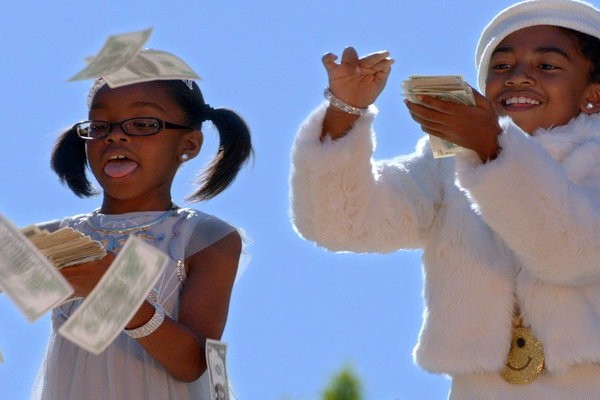How Other People Do Money: Kids Around The World
by Eliana Osborn

Thirteen-year-olds save more money than older teenagers, not just in the US but around the world. Studying 70,000 kids around the world with savings accounts, half earning less than $3 a day, this is what researchers found.
When I was thirteen I made bank by babysitting. Not for my mom, who only paid 25 cents an hour, but for other people. I couldn’t drive and there was no internet, so I saved nearly every penny I earned. I remember that person I was fondly; I wonder what happened to her. By the time I was fifteen I spent a whole lot of money on the J. Crew catalog, not realizing that preppy clothes weren’t going to turn my skater girl self into a new person.
“Youth Savings Patterns and Performance in Colombia, Ghana, Kenya and Nepal” will tell you everything you never wanted to know about how poor kids around the world are doing a better job of saving money than you are. Or than I am, at least.
Key points:
+ Using parents, not just other adults like teachers, as account cosigners led to higher savings. Obviously — a teacher may be nice to you, but not your parents. They’re going to remind you every day about saving your money and not spending it on stupid crap like Diet Coke and Beats headphones.
+ 40% of young people used their savings accounts during the six months of the study. That seems reasonable; not quite half of us make an effort at savings. We get the account going, swear to direct deposit every pay period, but then something happens. Inevitably I need a home repair or medical thing. Or amazing, really good deal teal suede wedges.
+ If you want girls to save, make it easier for them to open accounts and focus on getting started rather than how much money is involved. Girls are smart. They can get the idea of slow and steady, perhaps better than teenage boys. Their deposits might not be huge but they’ll keep doing it and eventually take over the world.
I need to save more money. Kids, even the poorest ones, around the world are having better financial habits than me. I can’t think of anything else to make me feel more guilty.
I’ve been in education for fifteen years, so I’m thinking about this information from a teaching standpoint. When I taught at an alternative high school, I always made my classes talk about money, even though my subject area is English. Teens don’t have any clue what things cost, so we’d work out the expenses for moving out. Inevitably, we’d realize that it wasn’t possible — unless we got creative, like having roommates.
My financial literacy proposals include:
+ Teaching about savings accounts in sixth grade, around age 12, not towards the end of high school.
+ Can banks offer higher interest rates to young people to encourage saving? .78% is depressing and uninspiring and non-motivational.
+ Require real finance classes in high school or college. For me, Personal Finance was the biggest joke course I ever took and it made me angry the whole time as I realized what I wasn’t learning.
+ Talking more — all of us — about financial choices. Because that is what it comes down to: no one can do everything with her money. No matter how much you have, you have to prioritize and choose. Everyone in America, parents and media and schools and churches, can do this better.
Eliana Osborn is a writer and part time English professor living in the desert southwest.
Support The Billfold
The Billfold continues to exist thanks to support from our readers. Help us continue to do our work by making a monthly pledge on Patreon or a one-time-only contribution through PayPal.
Comments